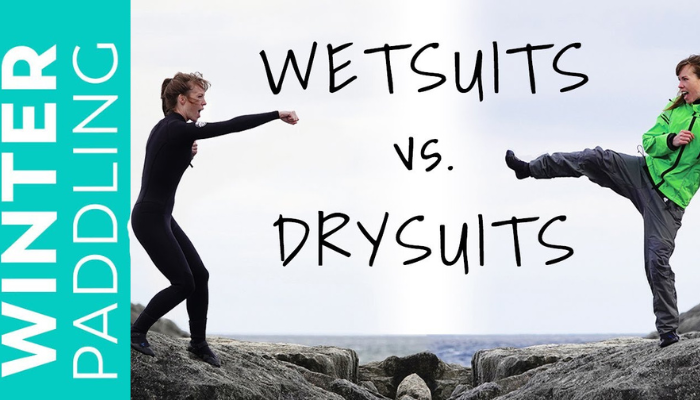When it comes to sailing, selecting the right suit can make a big difference in your comfort and safety. A wetsuit is great for warmer months or locations with mild temperatures. It allows a thin layer of water to enter, warming up against your body—perfect for sunny days when you’re splashing through gentle waves. You can do it anytime, but it’s best during spring and summer when the water isn’t too cold.
On the other hand, a dry suit is ideal for colder conditions as it keeps you completely dry by trapping air and insulation inside. This makes it perfect for autumn sailing or locations with common chilly winds. With a dry suit, you’re staying warm and safe from hypothermia should you accidentally fall overboard.
When Do You Need A Wetsuit Or Drysuit?
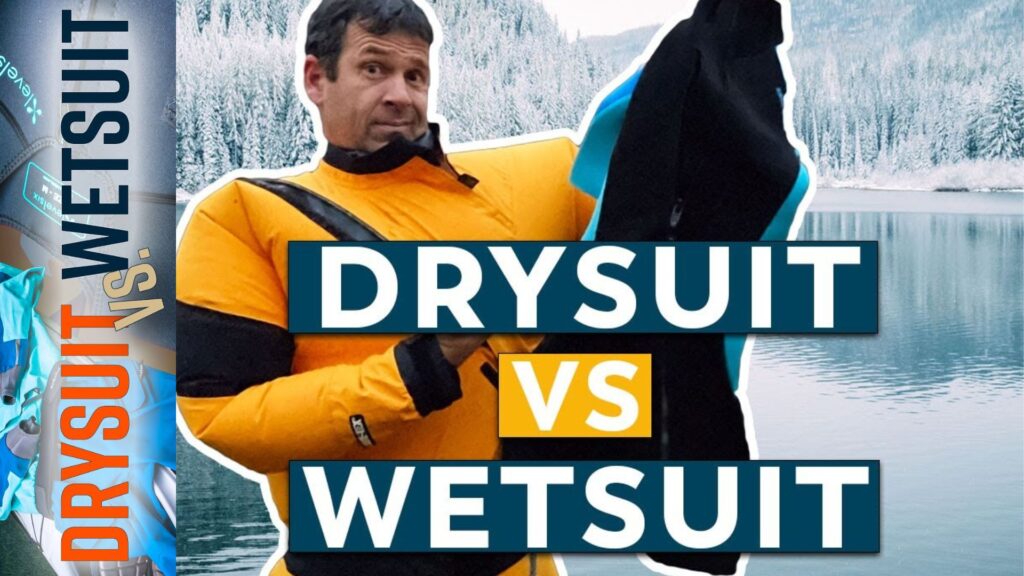
When deciding whether you need a wetsuit or drysuit, a good rule of thumb is the 120-degree rule. This rule combines the water temperature and air temperature. For instance, if the air temperature is 75°F and the water temperature is below 45°F, you’ll find that your total is only 120 degrees. This means it’s time to gear up! A wetsuit keeps you warm by trapping a thin layer of water against your skin that gradually warms up with your body heat, making it great for milder conditions and activities like surfing or swimming.
On colder days with frigid waters or when you’re diving into icy lakes, a drysuit may be your best bet. Drysuits create an airtight seal around you, keeping all moisture out while allowing for layering underneath — perfect for those chilly dives where staying dry means staying warm! Remember: both suits have their purposes based on activity level and climate conditions.
Capsizing In Cold Water Is Not Fun Without Proper Gear
Capsizing in cold water can quickly turn an enjoyable day into a struggle for survival, especially when temperatures drop to the upper 30s or low 40s. The shock of icy water can leave even the strongest swimmer gasping for breath, making it essential to wear proper gear like a good wetsuit. While you might think that investing in a cheap wetsuit isn’t worth it, consider this: having that extra layer helps retain body heat and provides protection against cuts and scrapes if you end up in turbulent waters.
At SUNY Maritime College, students learn first-hand about the importance of safety gear during their training. Those equipped with proper wetsuits reported feeling comfortable and capable when faced with unexpected capsizes.
What Is A Wetsuit
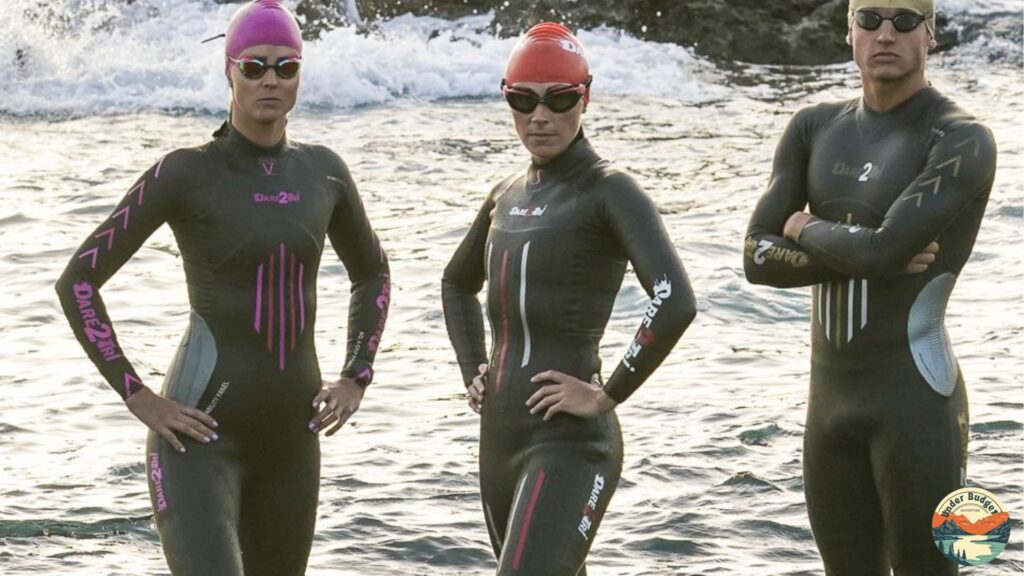
A wetsuit is a special outfit for water activities like surfing, diving, and swimming in cold conditions. It is made from neoprene, which helps keep you warm by trapping a thin layer of water close to your body. As your body generates heat, this layer warms up and acts as insulation, keeping you comfortable even when the surrounding water feels chilly.
Wetsuits come in different thicknesses, labeled like 5 4, 3mm or similar measurements. This means the suit has varying thicknesses at different parts: thicker areas provide extra warmth where you need it most, while thinner sections allow for more flexibility.
How Much Do Wetsuits Cost?
A wetsuit is made from thick, stretchy material designed to keep you warm in cold water. It traps a thin layer of water between the suit and your body. This little pocket of water warms up with your body heat, helping you stay comfortable while swimming or surfing. You can find wetsuits at different prices, typically ranging from $50 for basic options to $800 for high-end models with advanced features.
Advantages Of A Wetsuit
Wearing a wetsuit can turn your time in the water into a comfortable adventure. One major advantage is its ability to keep you warm, even in chilly waters. Wetsuits are made from neoprene, which provides insulation by trapping a thin layer of water between your skin and the suit. As your body heats this water, it creates a cozy barrier against the cold, allowing you to stay in the ocean or lake much longer.
Disadvantages Of A Wetsuit
Wetsuits can be uncomfortable, especially when you put them on for the first time. The tight fit is designed to keep water out, but it can feel restrictive. This discomfort might distract you from enjoying your swim or surf session. Also, some wetsuits are made from materials that don’t breathe well, which means you can feel hot and sweaty after a while.
What Is A Drysuit
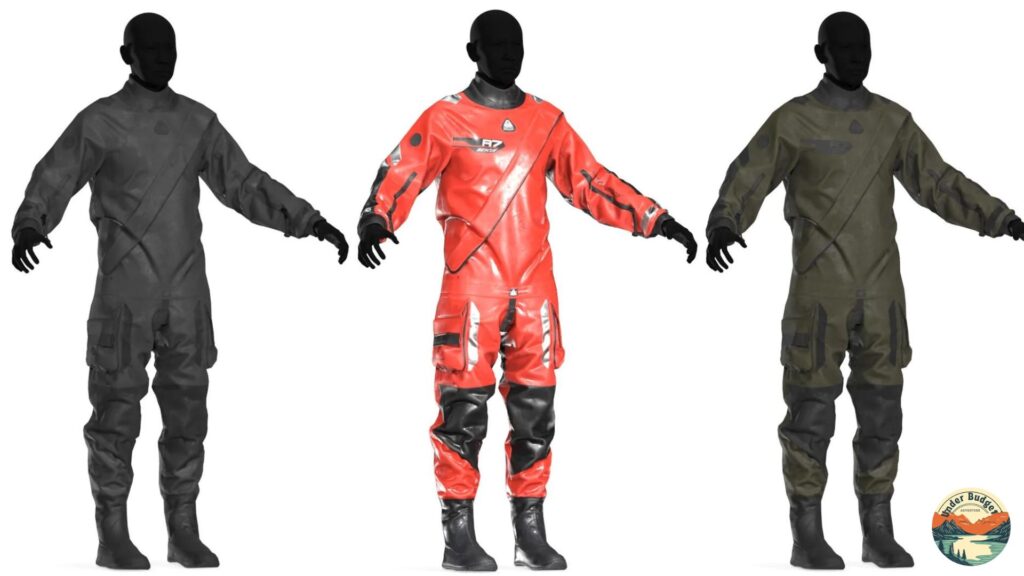
While wetsuits are wonderful for the coldest days, they come with disadvantages that deserve attention. One major drawback is their tight fit, which can sometimes feel restrictive. While great for warmth, this snugness might limit your freedom of movement when you want to swim or surf effortlessly. For those who prefer more flexibility, wearing a wetsuit may not provide the comfort and ease in regular swimwear or even a ski jacket and ski pants combo.
How Much Do Dry Suits Cost?
When buying a drysuit, prices can vary widely depending on the brand and features. The cheapest drysuits might start at around $300, making them accessible for those just getting into water sports. However, remember that lower-priced options may not be as durable or feature-rich, which could impact your comfort and safety during adventures.
Advantages Of A Drysuit
A drysuit is a fantastic choice for water activities, especially in cold conditions. One of the biggest advantages is that it keeps you completely dry. Unlike wetsuits, which allow some water to seep in, a drysuit prevents water contact with your skin. This means you can stay warm and comfortable for longer, even when the temperature drops.
Another great benefit of using a drysuit is its versatility. You can layer clothing beneath it to suit various weather conditions—adding thicker layers for colder days or lighter options when it’s mild outside.
Disadvantages Of A Drysuit
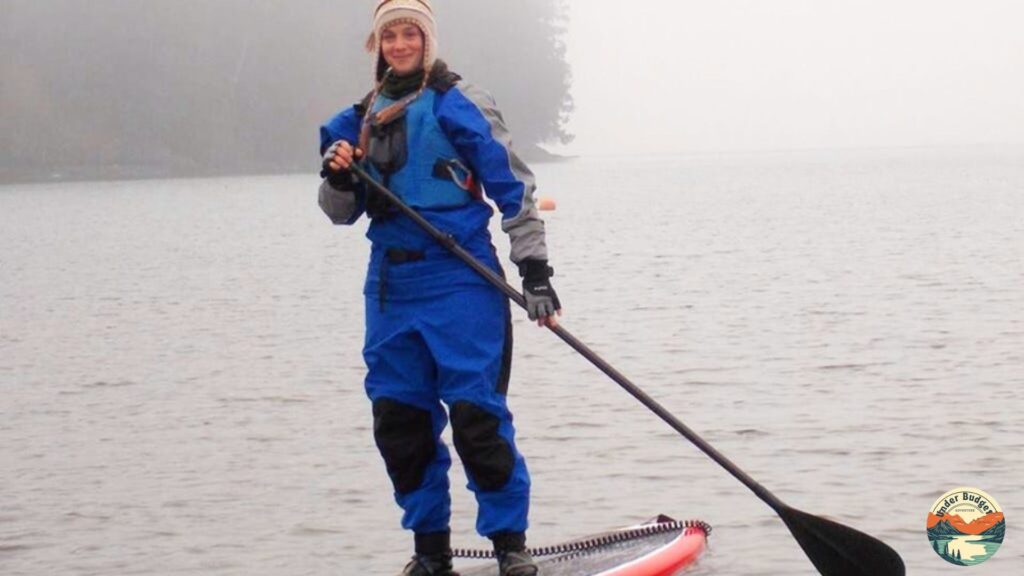
While drysuits are popular for underwater adventures, they have some significant downsides that every diver should consider. One major issue is the increased bulkiness of a drysuit compared to a wetsuit. This extra material can feel cumbersome and may limit mobility, making some activities trickier. This added bulk can be frustrating for divers who enjoy agile movements or swift action in the water.
Another disadvantage is the cost associated with drysuits. They tend to be more expensive than wetsuits in terms of purchase price and maintenance.
Wetsuit Vs Drysuit For Sailing. Which One Is Better?
Comfort is key when choosing between a wetsuit and a drysuit for sailing in temperatures around 55-65 degrees. A wetsuit can provide sufficient insulation for these conditions, as it allows water to enter but keeps your body warm by trapping a thin layer of water that gets heated by your skin. However, a drysuit might be the better choice if you’re anticipating more frigid conditions, especially on a 50-degree day or colder. Drysuits keep you completely dry but can feel bulkier, yet they often allow for more freedom of movement.
Regardless of which suit you select, consider layering with wicking materials underneath. This material will draw sweat away from your body and help regulate temperature while at sea. Additionally, consider how you’ll be moving aboard—an uncomfortable fit can hinder your performance and enjoyment.
Conclusion
When it comes to staying warm and comfortable while enjoying water activities, you might wonder whether a drysuit is better than a wetsuit. A dry suit keeps you completely dry by sealing out water, making it ideal for cold weather or icy waters. Since air is trapped inside the suit, it provides excellent insulation. This means that, even if you swim in frigid temperatures, you’ll stay warm much longer.
FAQ
Is a Drysuit Better Than a Wetsuit?
When it comes to staying warm and comfortable while enjoying water activities, you might wonder whether a drysuit is better than a wetsuit. A drysuit keeps you completely dry by sealing out water, making it ideal for cold weather or icy waters.
Q: Can You Swim In A Drysuit?
When deciding between a drysuit and a wetsuit, it really comes down to comfort and conditions. Drysuits keep you completely dry by sealing out water, making them fantastic for cold-weather adventures or sailing days when splashes are inevitable.
Do You Wear Anything Under A Wetsuit?
Wearing something under a wetsuit can enhance comfort and performance. Many people choose to wear swimsuits, like bikinis or speedos, because they fit snugly and don’t create extra bulk.

